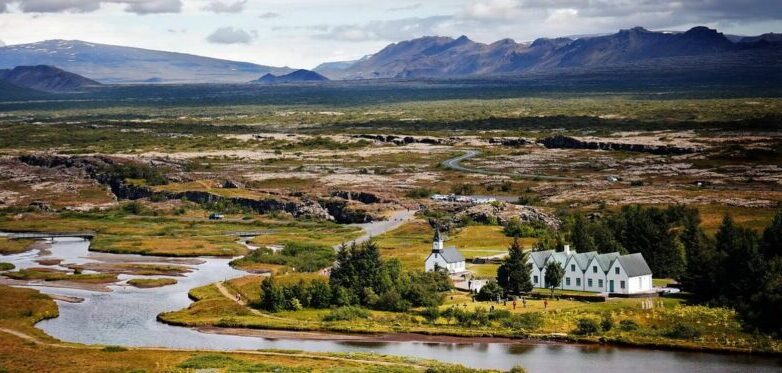Thingvellir National Park is notable for both historical and geological issues. As a national park, it was organized in 1930 in honor of the 1000th anniversary of Althing, the ancient parliament, originally founded in Thingvellir in 930 AD, and remained there until 1798. In 2004, Thingvellir has declared a World Heritage Site.
Thingvellir is extremely valuable to all Icelanders. This is the most important place in the history of the country. In the Middle Ages, the Altingi was Iceland’s highest legislative and judicial court. For centuries, Thingvellir has been a gathering place for people from all over the country every year in June. This place was the social center for Icelandic society. And, according to the Sagas, everyone was well dressed in colorful silk clothes and the like when they visited Alting.
Thingvellir is a place that has not the only historical significance, but also cultural and geological. It is located in the rift valley, on the crest of the Mid-Atlantic Ridge. A fault is visible with fissures passing through the area. The biggest fissure is Almannagja, a real canyon. Due to the constant divergence of lithospheric plates, earthquakes often occur in the area. Lake Thingvallavatn, on the banks of which the park is located, is Iceland’s largest natural lake and enhances the beauty of Thingvellir. The landscape at Thingvellir is also stunning with colorful lava fields and beautiful mountains in the background.
Access to Thingvellir, Almannagjá fissure, Öxarárfoss waterfall, Drekkingarhylur drowning pool, and some of the magnificent landscape is quite simple but requires a short walk.

